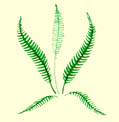The Fernhurst Society
Memories of Fernhurst: industries
previous page | next page | Contents
INDUSTRIES
The fine culvert and slag heats at Furnace Pond remind one of the days when Fernhurst was the centre of the iron smelting industry. The charcoal for it was provided by the forests surrounding the village on all sides. Cylinders Yard reminds us of the days when there were large cylinders at that district for storage.
It is a grand experience to watch the charcoal burners. The travelling huts in which the workers live arrive in the wood, plus tools required. Then the large cylinders of metal are put in position in a chosen place in the wood. During the next few weeks the cylinders are systematically filled with layers of saplings and branches and trunks of trees, with a specially built chimney down the centre. Then one day when you go by a steady flow of smoke comes from the chimney in the centre of the mass of smouldering wood. When this process is completed the cylinders are removed to show the wood processed to charcoal. This was seen in a Fernhurst wood seven years ago and even now if you go you will find perfect charcoal in small pieces and the large empty cylinders rusting away.
Memory tells that a large proportion of the men in Fernhurst worked in the woods, until the sap rose in the spring. Then until the autumn they helped on the land and always at hay time and harvest.
There was a sawpit down Church Road. The trees were brought by wagon from the woods and sawn in this pit by Great-Grandfather Smith and as they sawed the wood the men sang, mostly Annie Laurie. At each end of the pit was an ash tree growing. Swish swish went the saws as the men sang their songs. Then the wood, when seasoned, was made into wheelbarrows, farm gates, etc, beautifully made by true craftsmen.
Henley Common was the scene of a brickyard and works, the clay soil being very suitable. Now this site is used by a fencing industry and large trees await their turn, as in years gone by, to be shaped for man’s use, but with more modern tools. If bricks could tell their story we should possibly find that many buildings and cottages built years ago were built of bricks from Henley Common.
It is within memory that quite a small industry was carried on by making hoops for barrels, until replaced by metal hoops.
Walking sticks were also made in Fernhurst, the handle being heated and then shaped. Again we find the men of Fernhurst busy with the touch of the wood which grows near them.
At Cooks Bridge there was once a busy flour mill, but alas, it is no more, but the water still flows down the steps by the ruins, where we are told the water wheel used to be. In its latter days it was worked by steam. The local farmers took their corn to be ground at this mill until it was pulled down in 1920, leaving only the foundations, but still the stream goes by.
Before cars came into use, a stables at Vann Bridge called Vollers Stables had carriages for hire. You could have had the choice of a Victoria, a dog-cart, a brake or a Brougham. They all remind one of interesting transport.
Hurdles and oak panels were also made at Fernhurst, wood coming to the fore again.
Mr Slade was at one period the undertaker and we are told he took the coffins from his place at Hogs Hill on a donkey cart covered by a black cloth. This would not be very pleasant to see, but it was evidently the customary practice.
In Fernhurst the art of hand spinning was revived in 1912 and many cottages had spinning wheels and spun some very good yarn. At one period the yarn was sent away to various hand weaving industries in the country and much was sent away to be knitted into garments by the cottage folk and into garments at home in Fernhurst. There are still private wheels and looms in Fernhurst and the weaving is of a very artistic and beautiful style. We believe that blankets were once woven at Ashurst.
A team of Fernhurst men once performed a very necessary task, they were well diggers. They divined and tracked the water and then sunk a well. These men were also the bell ringers at the church.
The older people remember that the roofs of cottages were at one time tiled with the pieces of chestnut left when the wood cutters had trimmed with wood for chestnut paling.
previous page | next page | Contents



The Fernhurst Oral History Project was supported by the Local Heritage Initiative. The Local Heritage Initiative was developed by the Countryside Agency and was funded by the Heritage Lottery Fund and Nationwide Building Society.

